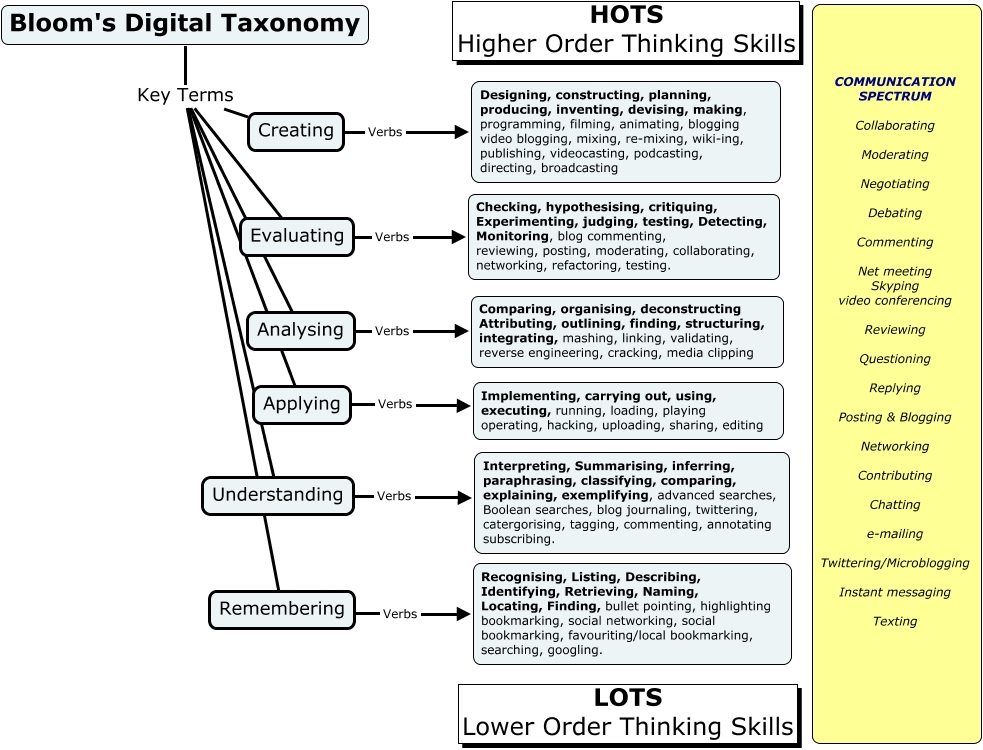
by TeachThought Staff
At TeachThought, we’ve described Bloom’s Taxonomy as “a hierarchical ordering of cognitive skills that can, among countless other uses, help teachers teach and students learn.”
Whether you’re designing instruction, evaluating an assessment, or observing a classroom, Bloom’s remains a powerful tool for understanding how thinking happens—and how we can better support it through intentional lesson design.
Bloom’s Digital Taxonomy builds on this framework by aligning those same cognitive levels—Remember, Understand, Apply, Analyze, Evaluate, and Create—with common digital tools, media, and tasks. In doing so, it helps educators design technology-rich lessons that promote thinking, not just digital busywork.
The chart below is a visual version of this concept. It maps common digital activities—like blogging, podcasting, bookmarking, tagging, networking, and wiki-building—to Bloom’s levels of thinking. Originally created by Andrew Churches on the now-defunct edorigami Wikispaces, this adaptation continues to offer a helpful way to visualize how cognitive demand varies across digital tasks.
Looking for practical classroom verbs instead of task types? Explore our companion list of 126 Bloom’s Digital Verbs For Technology-Rich Teaching.
Using Bloom’s Digital Taxonomy in the Modern Classroom
While Bloom’s is often used to plan assessments or differentiate instruction, this version encourages teachers to also evaluate the cognitive complexity of digital work. Are students just searching and repeating, or are they synthesizing, designing, and reflecting?
The Communication Spectrum on the right of the chart further emphasizes how learners engage with others in digital spaces—from messaging and posting to more nuanced forms of collaboration.
What About AI Tools Like ChatGPT?
AI tools like ChatGPT present new challenges and opportunities when viewed through Bloom’s lens. For example, prompting ChatGPT to summarize an article might fall under Understanding, while asking it to generate interview questions could land in Applying or even Creating—depending on how the output is used by the student. The key is in the design of the task and how learners are expected to interact with the tool.
A Takeaway
This version of Bloom’s isn’t just about matching tech tools to ‘tasks.’ Instead, it (hopefully) helps educators see the thinking demands embedded in digital activities—making the less visible skills in ChatGPT, streaming, social sharing, podcast creation, and more.
Want a full list of verbs based on this framework? Check out 126 Bloom’s Digital Verbs For Technology-Rich Teaching.
Need a traditional version for lesson planning and assessment? Visit Bloom’s Taxonomy Verbs For Teaching and Assessment.
TeachThought’s mission is to promote critical thinking and innovation education.

